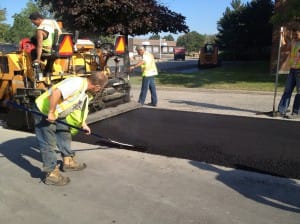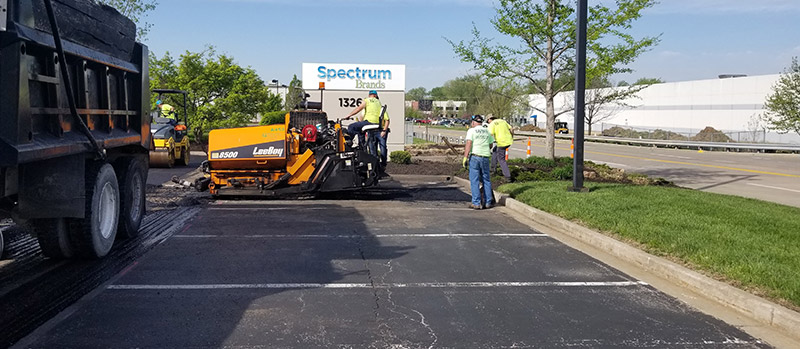The Definitive Guide to A1 Professional Asphalt & Sealing Llc
The Definitive Guide to A1 Professional Asphalt & Sealing Llc
Blog Article
What Does A1 Professional Asphalt & Sealing Llc Mean?
Table of ContentsEverything about A1 Professional Asphalt & Sealing LlcA1 Professional Asphalt & Sealing Llc for DummiesFacts About A1 Professional Asphalt & Sealing Llc Revealed10 Easy Facts About A1 Professional Asphalt & Sealing Llc ExplainedNot known Facts About A1 Professional Asphalt & Sealing Llc

The oil in a car engine is not simply oil. It includes a selection of ingredients to improve the car's efficiency. These consist of polymers, viscosity modifiers, heat stabilizers, extra lubes, and put on ingredients. The REOB contains all the additives that were in the waste oil as well as the wear steels from the engine (primarily iron and copper).
By making several blends making use of various REOB examples and various asphalt binders, the variations largely can be averaged out. Numerous States provided samples of known REOB composition to TFHRC researchers, who examined the samples to compare the portion of added (known) REOB to the located (examined) quantity. The analyses revealed a comparable percentage of included and discovered REOB.
What Does A1 Professional Asphalt & Sealing Llc Mean?
None of those States recognized that the asphalt they were buying consisted of REOB. One State insisted its samples had no REOB - https://pastebin.com/u/a1asphaltseal.
Of the 1,532 examples tested, 12 percent had REOB, and some contained significantly high levels of it at 1020 percent. The highest degree was 34 percent in a sample from Texas, which TxDOT had actually used in a patching substance. This screening likewise exposed the presence of phosphoric acid in 11 percent of the examples, and 2 percent contained ground tire rubber.
Two years ago at TRB's yearly conference, the Federal scientists held an REOB workshop and presented the findings of their research laboratory evaluations to a standing room-only crowd. Some firms do not particularly ban REOB, they do enforce physical examinations that avert its useeffectively a restriction. Others do not ban it by spec, yet have contracts with asphalt vendors to avoid making use of REOB
The Buzz on A1 Professional Asphalt & Sealing Llc
Ohio and Texas limitation degrees to less than 5 percent of the asphalt. To create a trusted examination method that all States can make use of, the TFHRC scientists established up a round-robin test plan.
In total, the researchers prepared and shipped 720 blends. The participants are evaluating the samples separately making use of the guidelines supplied by the TFHRC scientists. The round-robin screening is nearly completed, and TFHRC is in the process of gathering the outcomes. The result will be a suggested AASHTO test approach that any type of State can embrace and utilize (asphalt paving repairs).
The pavement with REOB, which is situated 0.6 mile (1 kilometer) from the pavement without REOB, has identical subgrade, web traffic density, and environment. Nevertheless, the segment of Highway655 with 5 to 10 percent REOB revealed significant fracturing. In this instance, the visibility of REOB was the determined source of cracking at a low temperatures.
An area of examination sidewalk in Minnesota (MN1-4) found to contain REOB likewise fractured too soon. The pavement done well for the very first 3 to 4 years, yet then started to break.
A1 Professional Asphalt & Sealing Llc Fundamentals Explained
The tests were not comprehensive, however they revealed that at levels of 6 percent or more, the tensile toughness of the asphalt went down dramatically. At a degree of 3.5 percent REOB, the variation in the physical examination approaches was higher than the effect of REOB. It was tough for researchers to analyze whether REOB was existing. https://www.imdb.com/user/ur180438932/.

One binder parameter thought about is the difference between the low temperature level crucial requirements temperature for tightness (S) in the bending beam of light rheometer and the flexing visit here light beam rheometer creep incline (m-value) noted as Tcritical. TC = TC (S) TC (m-value). Examination of this parameter is still ongoing. Two independent study groups, one from AASHTO and the various other from the Asphalt Institute, wrapped up that more research study is required on making use of REOB in asphalt.
Formerly, all asphalt testing gauged engineering buildings such as rigidity. These tests do disappoint what materials had actually been contributed to the asphalt. One example received throughout the TFHRC research had an extremely strange analysis. The example had the following examination results: Superpave PG 64-28 with a high temperature level grade of 67.3 Tcritical on the flexing beam rheometer was 6.7 levels Celsius.

The Greatest Guide To A1 Professional Asphalt & Sealing Llc
These outcomes show there are weaknesses in the standardized engineering testing protocols that might be manipulated. The manufacturer may have an economic advantage and the item passes all the standardized tests, but the item might not be valuable to making certain long-lasting performance. To resolve this concern and the growth of new asphalt ingredients and extenders, TFHRC is beginning a research study program to use portable spectroscopic gadgets, x-ray fluorescence spectroscopy, and Fourier transform infrared spectroscopy to make it possible for evaluations to be carried out in the area instead of having to take samples back to the laboratory.
Report this page